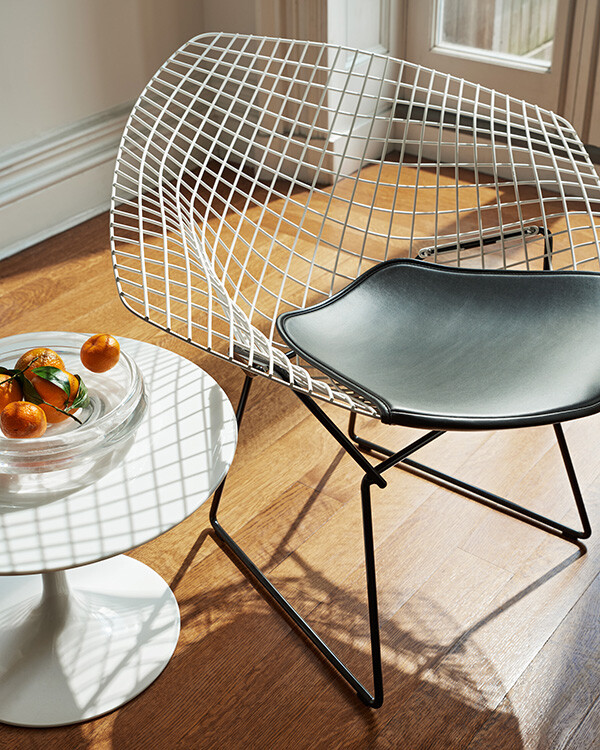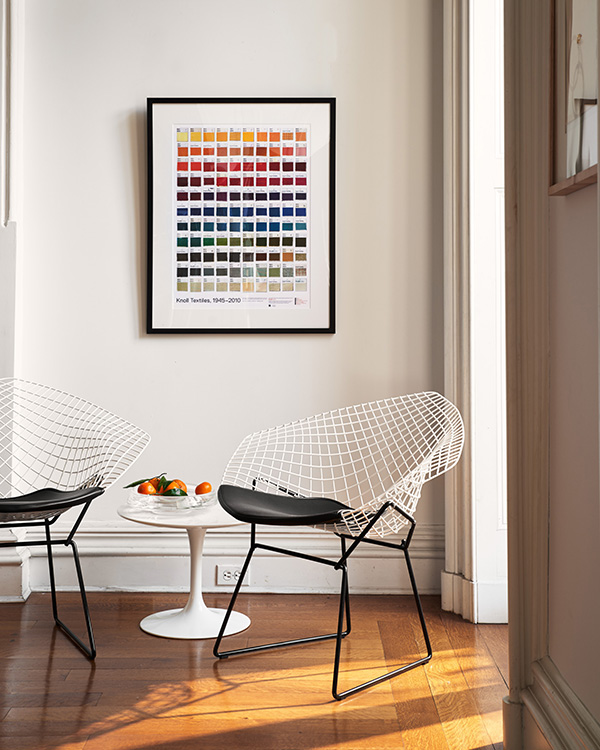Why buy authentic design?
As you know, here at Nest we live and breathe great design.
We firmly believe that it’s better to buy once and buy well than to buy something that you will need to replace in just a few years’ time. But unfortunately, there are more and more cheap imitations of our favourite designs appearing on the market.
We’ve teamed up with Abi, the writer and photographer behind design blog, These Four Walls to discover why it’s always worth investing in authentic design, rather than buying fakes – take a look at what Abi has to say…
“I have a confession: years ago, when I was a lot less clued up about design and its value, I bought a replica of Ludwig Mies van der Rohe’s famous ‘Barcelona’ chair. I’d admired it for ages and couldn’t see the problem with ordering a £300 fake when a £6,700 authentic one was out of my reach. Then it arrived, and I realised the error of my ways. The webbing was made from ugly nylon, the upholstery looked more like plastic than leather, and it was so wobbly that it proved almost impossible to sit on.
It’s a mistake I’ll never repeat, but I know just how easy it is to give in to the temptation of what looks at first glance like a bargain. And there are so many fakes out there: type the name of any iconic design into Google’s ‘Shopping’ search and most of the results will likely be knock-offs, couched in language like ‘inspired by’ or ‘in the style of’ to get around copyright laws. They’re often accompanied by biographies of the designer, and in many cases display photos of the original rather than the replica. In fact, some of the descriptions I came across while researching this post were so misleading that it would be almost impossible for anyone without a good knowledge of design to tell what’s what.
So, in a world awash with copies, why shell out for authenticity? Firstly, every designer, from the 20th-century greats to lesser-known talents at the start of their careers, deserves to have their work honoured. The most enduring pieces are the result of years of research, development and refinement, and to my mind creativity and innovation should always be celebrated rather than cheapened by forgeries.
What’s more, as my cautionary tale demonstrates, the lower price tag means much lower quality. There's no way manufacturers of fakes can cut costs to such an extent without using poorer materials and techniques, and even though you’ll spend less in the short term, you’ll probably end up replacing whatever you’ve bought within a year or two. Authentic pieces, on the other hand, are timeless investments: they’ll last for decades to come and hold or even increase in value. And you never know where, how or under what environmental and labour conditions the knockoffs have been made.
Delving a bit deeper into the topic, I’ve taken a look at a few of the most often-copied pieces from Nest.co.uk’s range on my blog, exploring the stories, craftsmanship and ideas that make them so special. For each, I’ve also rounded up some more accessible alternatives that are available for a similar price to the forgeries, showing that it’s possible to invest in authentic design no matter what your budget.”
You can read Abi’s blog post here.
Here at Nest we only ever sell authentic design, so you know when you buy from us, you will receive the genuine article. We’re proud to stock expertly crafted forever designs, pieces of furniture, lighting and accessories that will last you a lifetime.
We would love to know your thoughts on this topic. Have you ever bought a fake, and if so, did you regret it? Share your own forever design purchases with us over Instagram by tagging us @nest_co_uk.








